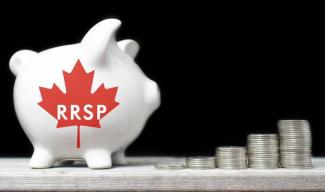
Time for Some Cash Back!
RRSP Season is upon us, and for most that means a contribution will reward you with a nice refund once you file your tax return. The deadline to make your 2021 RRSP contribution is fast approaching, and in order to ensure your contribution is counted towards the 2021 tax year it needs to be in by March 1st.
For those of you have wondered how RRSP contributions work, the benefits they provide, and some unique questions surrounding RRSP's, this article is for you. Let's jump right into it...
How do RRSP Contributions Work?
Understanding RRSP's is pretty simple, and the concept of this registered account is very similar to others in the US and around the world. The best way to conceptualize the account is to view it as an account you add Pre-tax income, you grow the account throughout your lifetime deferring taxation the whole time, and only pay tax once you start making withdrawals. So when you make a contribution to your RRSP, this amount should not be taxed as income for you, or added to your taxable income for the year.
Why do most people receive a refund when making an RRSP contribution?
The easiest way to describe this scenario is through an example. See below:

Imagine John has a good job and earns $120k from his employer as a software developer. Throughout the year, his employer will withhold taxes owed based on his $120k salary. In this case, taxes owed by John would be estimated around $31,700, and throughout the year each paycheck would withhold tax, so that by the end of the year this would amount to $31,700 in taxes withheld. However, what if John makes a $20k RRSP contribution? Well, as was mentioned earlier, these contributions are considered "pre-tax" contributions, and you can defer tax on the amounts you contribute to an RRSP. In other words, by making the $20k contribution to an RRSP, his new taxable income comes down to $100k, and he only has to pay tax on the $100k in income. Tax on $100k in employment income would be approximately $23k in Ontario. Since he only owes $23k in tax, but his employer withheld $31,700 to the government, he will receive the difference back when he files his tax return. In this case, his refund would be over $8,000. Sweet.
The Benefits RRSP's Provide
I've heard a lot of different opinions on RRSP's, and some people hate them. Some common complaints that I've heard are: "Instead of paying tax now I just pay it later" or "I'm in a high tax bracket now, and will still be in a high tax bracket in retirement". These are valid concerns. To counter these points, I point to the following benefits of RRSP's:
1. For most individuals, paying tax now vs. in retirement are two different tax rates. Most people will most likely be at a higher tax bracket now, and when they retire, they will be in a much lower tax bracket. As a quick example, if you make over $100k in Ontario, you're being taxed almost 44% on every additional dollar you make. With an RRSP contribution, you can defer paying tax at that 44% marginal tax rate, and most likely will be in a lower tax bracket in the future, such as 20%. In this example, that means that even if you just stuck cash into your RRSP, you would see a 24% reduction in the overall taxes you paid.
2. For the more rare case of individuals paying tax at the highest marginal rate now, and even in retirement - is there a benefit? Absolutely. The benefit relies in tax deferral, and the ability to compound wealth on a pre-tax basis. For example, imagine someone 30 years away from retirement and currently in the highest tax bracket in Ontario, at 53.53%. Let's assume they have $30k to add to their RRSP on a pre-tax basis compared with a contribution to a TFSA and in retirement they will still be in the highest marginal tax rate.
- In a RRSP, they will add $30k (since it's pre-tax dollars) and compound their wealth at 8% for 30 years. 30 years later, and they have $410,700 in their RRSP. If they pay tax at 53.53% upon withdrawing from their RRSP, they're left with $190,850 in after tax spending.
- In a TFSA, they first pay tax on the $30k @ 53.53%, and then can contribute it to their TFSA. This means they add $13,941 to a TFSA and compound wealth at 8% for 30 years. In this case, you end up with a final amount of $190,850 in after tax spending.
Most individuals wouldn't find themselves in this scenario, but even if this is the case, you can see how the benefits are very similar to a TFSA.
Special Considerations
The last point I want to make regarding RRSP's is that you don't have to use your RRSP room every year. We might be engrained to think we have to maximize this contribution on a yearly basis, but that might not be the best option. Any unused RRSP contribution room will be rolled forward into the next year, and if you haven't added to a TFSA that is a great option also!
For instance, if you're just starting out in your career and making $40k in Ontario, you're in the lowest tax bracket. Why not save up your RRSP contribution room for a year when your career really starts taking off? Saving up RRSP room for a year in which you are paying tax at 44% or 53% will give you a much bigger benefit than if your tax rate is only 20%.
Please Reach Out!
If you're wondering what makes sense for your situation, please reach out to us. The deadline for 2021 RRSP contributions is March 1st!
Looking forward to chatting!

Jonathan Adomait
Financial Advisor | CFP, BASc

